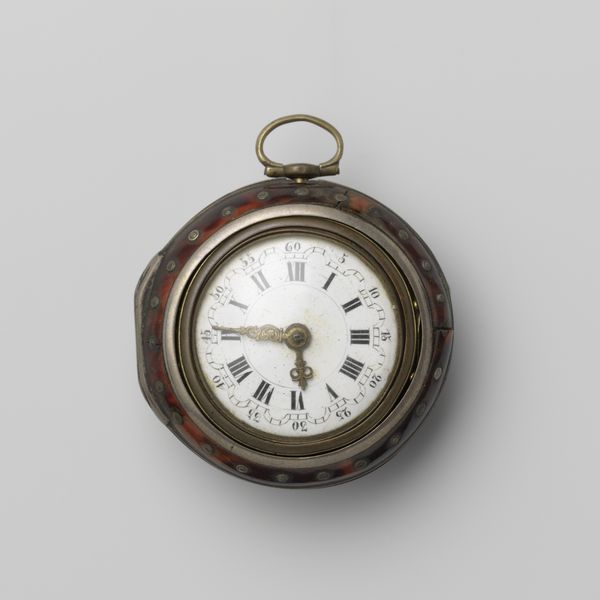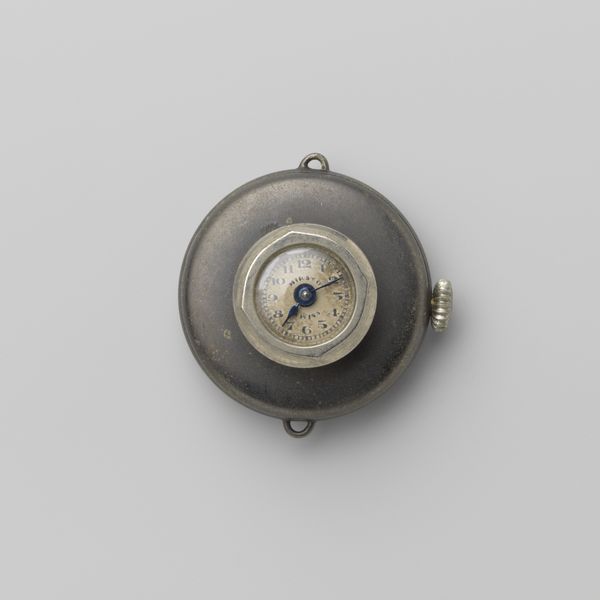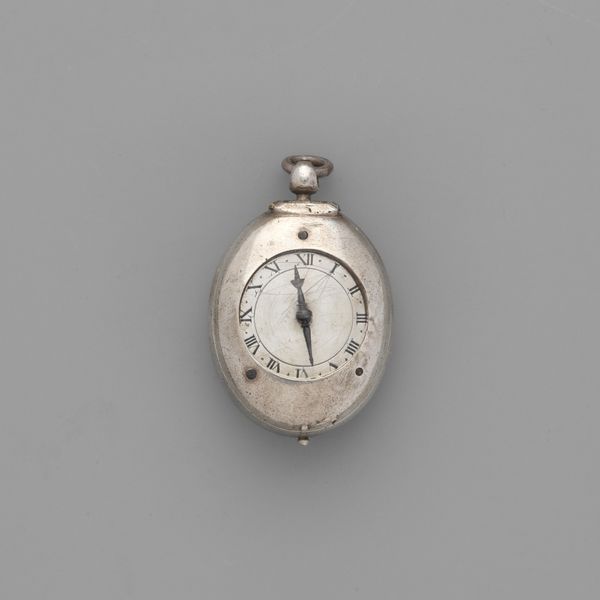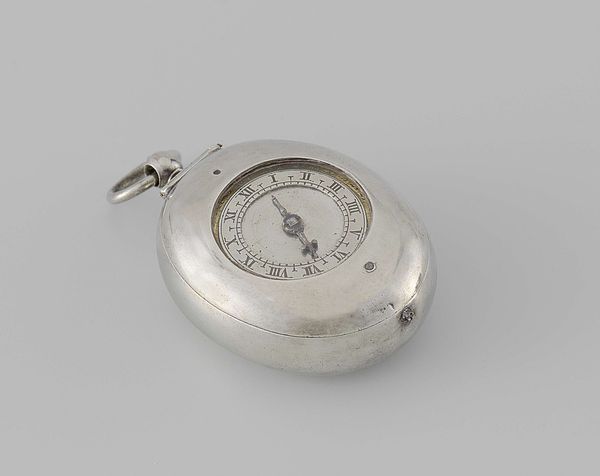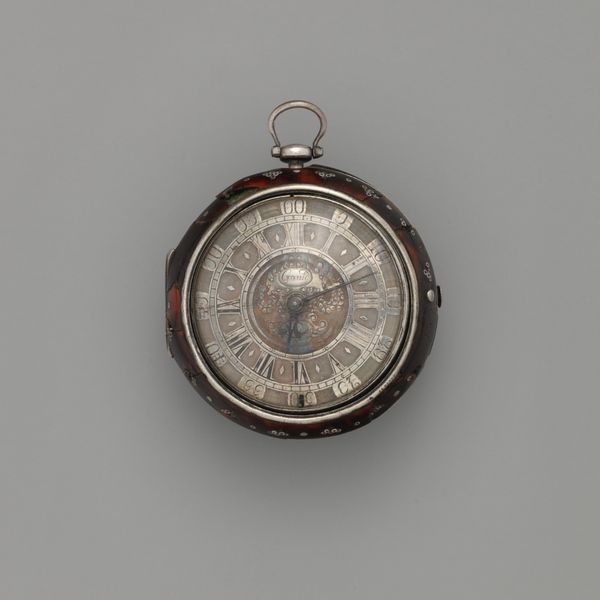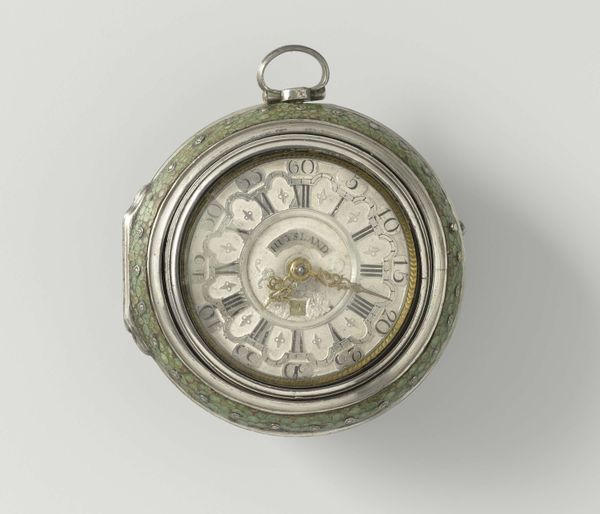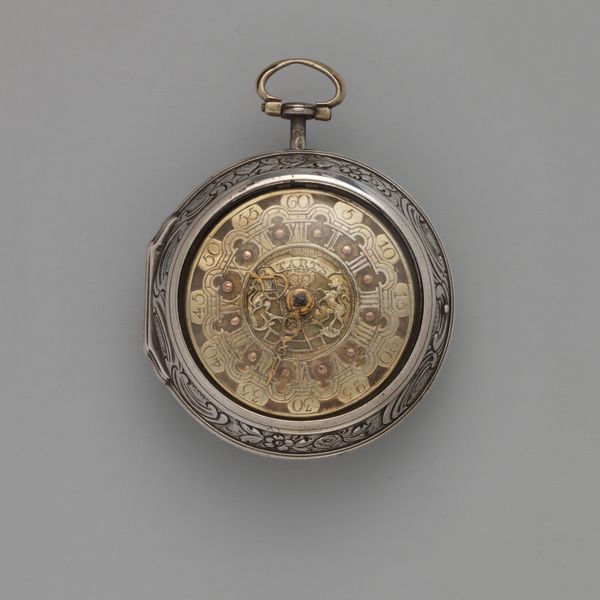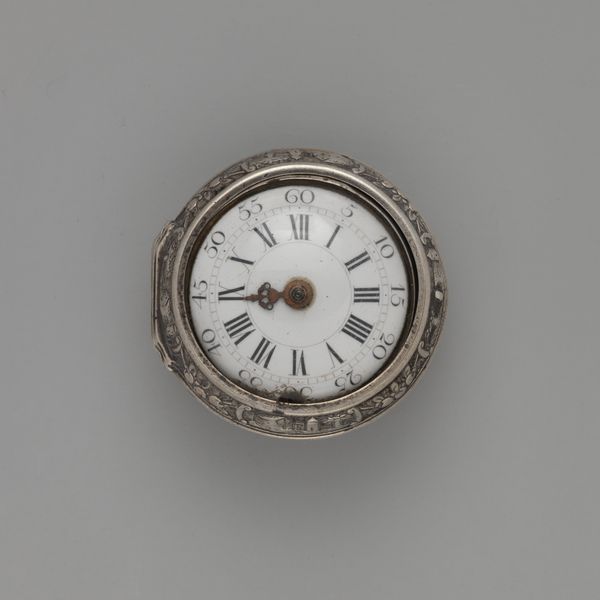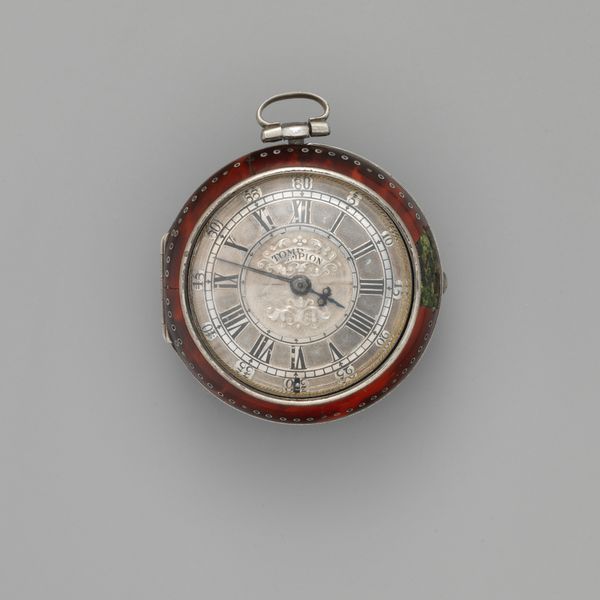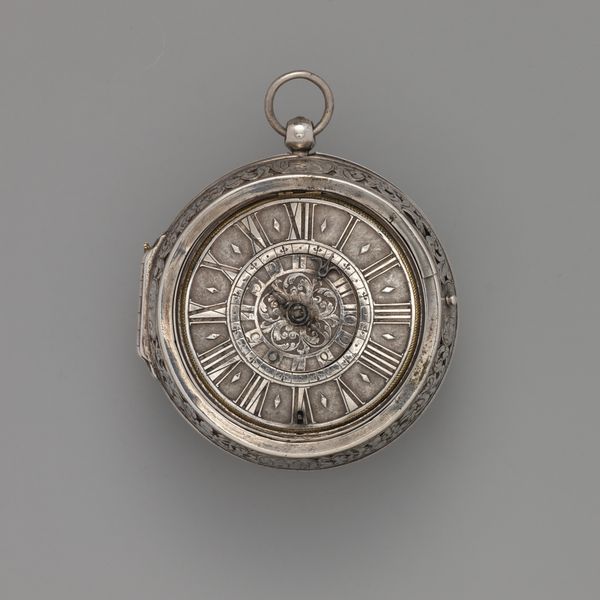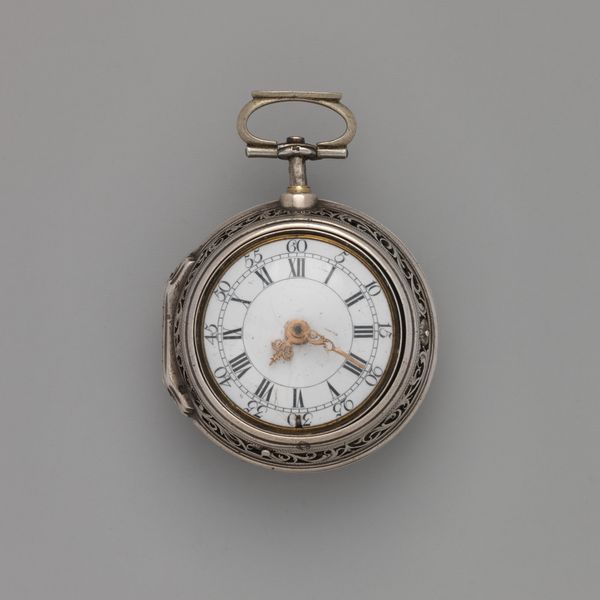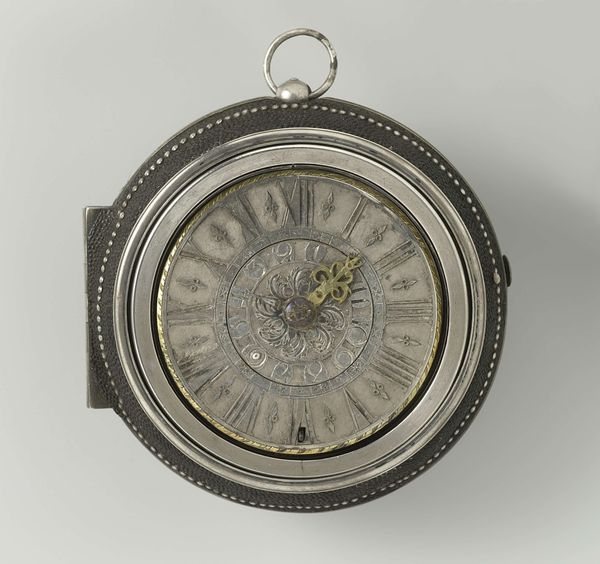
metal
#
neoclacissism
#
metal
#
decorative-art
#
miniature
Dimensions: diameter 3.1 cm, height 6.4 cm
Copyright: Rijks Museum: Open Domain
Curator: Before us is a metal watch dating back to 1807, by Fétil. It is known as "Horloge." Editor: What immediately strikes me is its form - an unexpected pear-like shape combined with what seems like decorative artistry… slightly unsettling given its function as a keeper of time. Curator: It’s quite intriguing, isn’t it? Examining it closely, one observes a delicate handcraft involved in its creation; its casing displays neoclassical influence, but the watch appears also as a symbol of bourgeois status in a historical period defined by social transformation. It bridges the gap between art and industry, as watches at that time required careful craftmanship and knowledge, representing time as a manufactured concept. Editor: Exactly. Its function cannot be separated from the period’s philosophical discourse and socioeconomic struggles: who had access to time? who dictated it? Also, what is hidden in the other side of the face? Who manufactured the casing, and with what labor conditions? The tiny scale intensifies those implications, adding a level of personal control in that society. Curator: It’s crucial to recognize this form of craft within the broader socioeconomic spectrum of labor and production practices. A metal piece from this time was often a valuable asset and it represented time in a private manner as not many people were able to afford clocks and other larger mechanisms for the wider audience. Editor: Absolutely, and that’s where its emotional power comes from, I think: that blend of private object, luxury, access, knowledge, labor. As if this object captures complex struggles and inequalities that defined its historical timeframe in a way that makes us reflect about class division in past and present societies. Curator: I agree; studying the craftsmanship involved provides insight into societal stratification reflected by materials used and who controlled them back then. Editor: Indeed. Reflecting on its role within history allows this "Horloge" to offer deeper insights beyond aesthetic appearances!
Comments
No comments
Be the first to comment and join the conversation on the ultimate creative platform.
